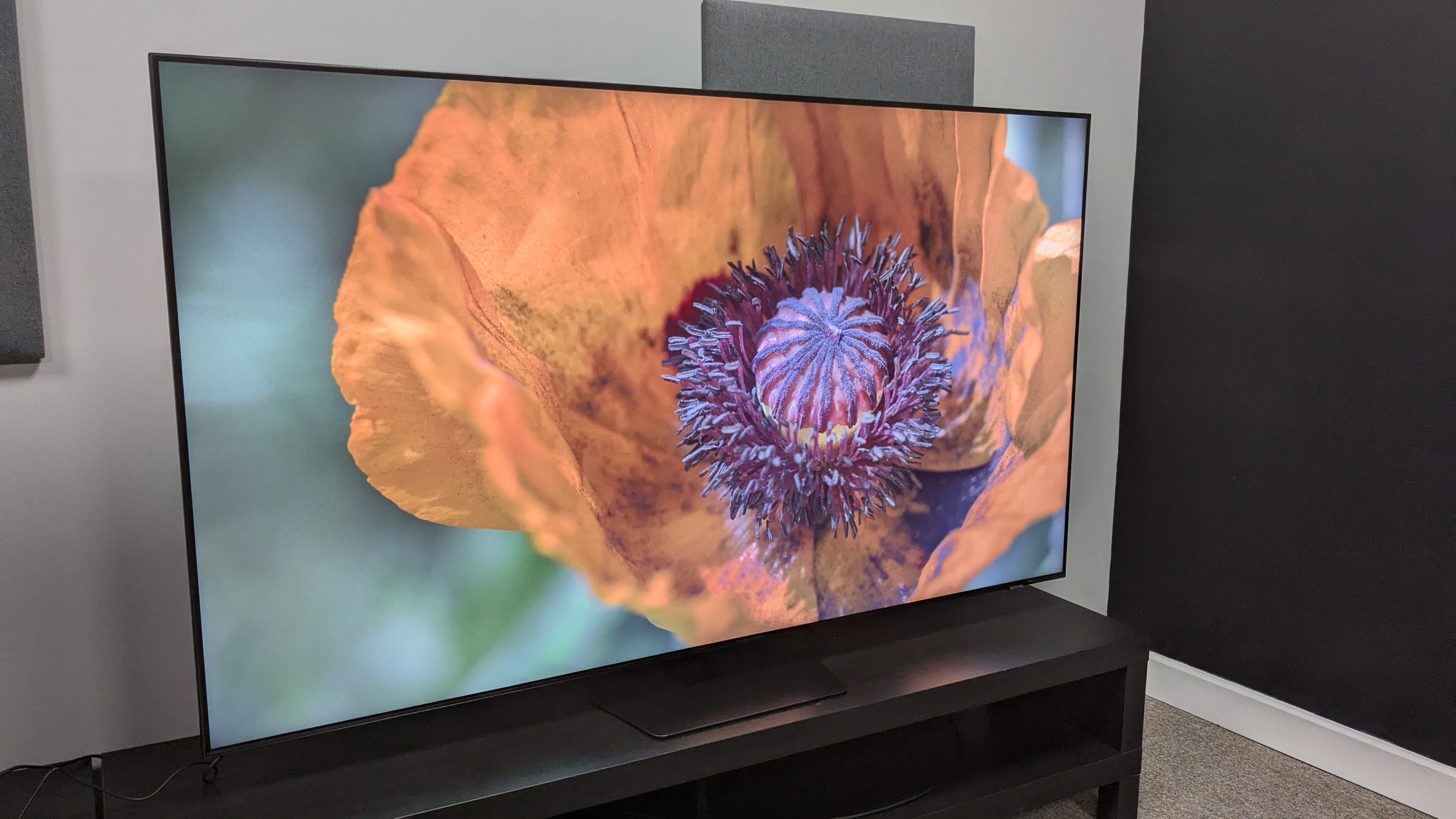
Samsung QN90D review: Two minute review
The Samsung QN90D is a superb mini-LED TV that brings improved brightness and detail over its Samsung QN90C predecessor. It sits in an extremely competitive mini-LED market alongside better-value sets, but thanks to its performance, especially when it comes to viewing sports, it still ranks as one of the best TVs of 2024.
Picture quality is mostly excellent on the Samsung QN90D. Its bright display gives colors an extra vibrancy while also maintaining a natural look and its contrast and black levels are consistently rich. Detail and textures are wonderfully refined and lifelike thanks to the clever processing and Real Depth Enhancer Pro AI features, but it’s motion where the QN90D shines, handling fast-moving pictures, especially sports, with ease. It ultimately doesn’t have quite the same wow factor as the Sony Bravia 9, which rivals the best OLED TVs, but the QN90D’s picture is still brilliant.
Audio quality is also pretty good on the QN90D. An Object Tracking Sound (OTS+) feature means sound accurately follows the onscreen action and bass is hefty and speech clear. Dolby Atmos effects extend beyond the screen, but the QN90D’s sound still feels held back in areas compared to the best TVs for sound. One of the best soundbars is recommended to match picture quality, but some will find the QN90D’s built-in sound more than good enough.
The QN90D's sleek, modern design and sturdy stand give it a premium look. Samsung’s Tizen smart TV interface is not quite as good as the webOS one found in LG TVs, but it’s a pretty dependable platform with hubs designed for easier organization and navigation.
The Samsung QN90D offers many of the features gamers look for, including 4K 144Hz, VRR with AMD FreeSync Premium Pro and more across four HDMI 2.1 ports. It’s also a fantastic performer, ranking it among the best gaming TVs of this year.
Value is the QN90D’s biggest hurdle, with competition from the fantastic TCL QM851G (US), TCL C855 (UK/Aus) and Hisense U8N providing better bang for your buck overall with similar features and performance for less. For sports fans. though, the QN90D may be worth the jump in price.
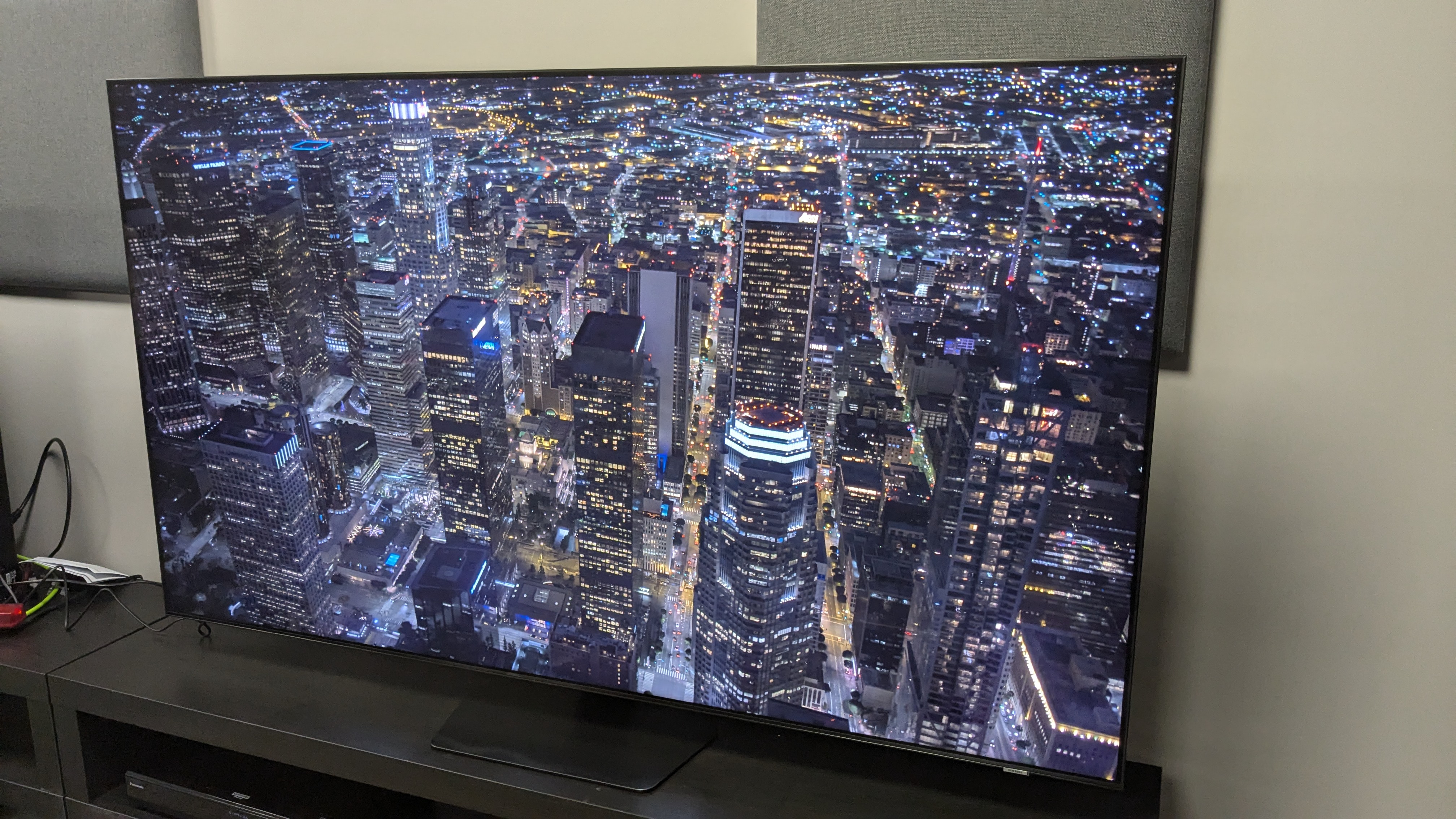
Samsung QN90D review: Prices & release date
- Released: April 2024
- 43-inch: $1,099 / £1,099 / AU$1,995
- 50-inch: $1,199 / £1,199 / AU$2,395
- 55-inch: $1,599 / £1,399 / AU$2,995
- 65-inch: $1,899 / £1,999 / AU$3,995
- 75-inch: $2,599 / £2,799 / AU$4,995
- 85-inch: $3,499 / £4,299 / AU$6,495
- 98-inch: $12,999 / £7,999 / AU$12,995
The Samsung QN90D is one of the flagship 4K models in Samsung’s Neo QLED (mini-LED) range. It is the flagship 4K TV in the US and Australia but sits below the Samsung QN95D in the UK. The QN90D is available in 43- to 98-inch screen sizes in all regions.
Prices have already reduced in the few months since the QN90D’s release. The 65-inch model that I tested is available for $1,899 / £1,999 / AU$3,995 at the time of writing after releasing for $2,699 / £2,699 / AU$3,999. It still sits at the premium end of the 4K mini-LED market, with more budget and mid-range options from the likes of Hisense and TCL available.
Samsung QN90D review: Specs
Samsung QN90D review: Benchmark results
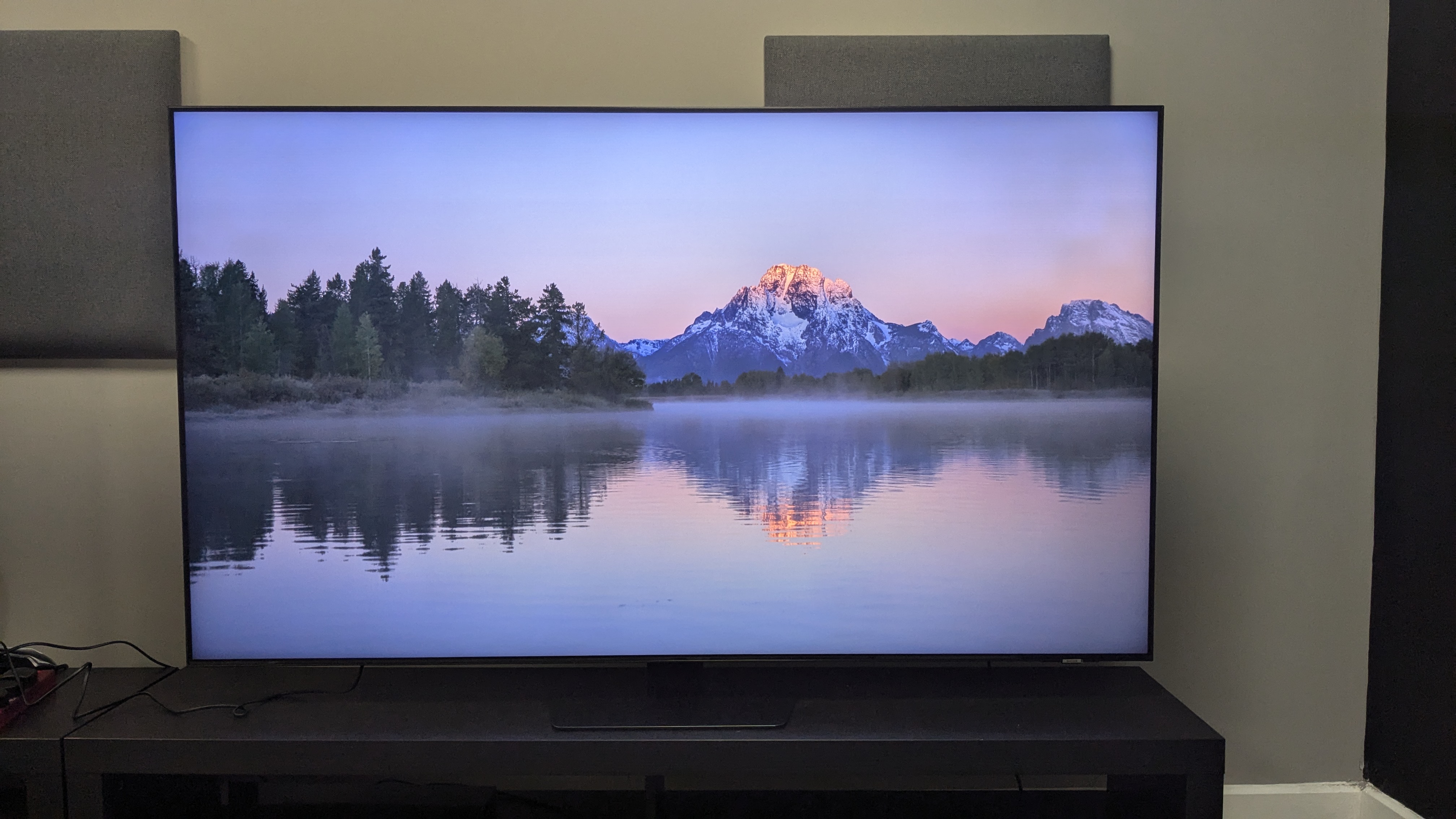
Samsung QN90D review: Features
- Mini-LED backlight
- HDR10+ support but no Dolby Vision
- Four HDMI 2.1 ports with 4K 120Hz
The Samsung QN90D uses a QLED display panel with a mini-LED backlight and also features an NQ4 AI Gen2 Processor, the same one found in the flagship Samsung S95D OLED TV. The NQ4 AI Gen2 enables features such as Real Depth Enhancer Pro, which improves textures and detail, and Auto HDR Remastering. which uses AI to apply HDR effects to standard dynamic range content.
As with all Samsung TVs, the QN90D supports HDR10+ but not the popular Dolby Vision HDR format.
For audio, the QN90D features a 4.2.2-channel speaker array that supports Dolby Atmos (but not DTS:X) and has a range of AI-driven features including Adaptive Sound Pro, which analyzes the viewing environment and adjusts audio accordingly, and Active Voice Amplifier Pro, which analyzes dialogue in a scene and dynamically boosts it.
The QN90D is well stocked for gaming, carrying four HDMI 2.1 ports that feature 4K 120Hz (up to 144Hz for PC gaming), VRR (including AMD FreeSync Premium Pro), ALLM, and a Game Bar menu (used to adjust gaming settings easily). It also comes with Samsung’s Gaming Hub which is used to access all things gaming-related, including cloud gaming services such as Xbox and Nvidia GeForce Now.
The QN90D uses Samsung’s Tizen smart TV interface, which provides hubs for different app categories. Tizen offers a wide range of streaming apps including Netflix, Disney Plus, and Prime Video as well as the UK-based BBC iPlayer, ITVX and Channel 4. It’s worth noting for UK readers that live broadcast TV is managed by Samsung under its TV Plus banner rather than Freeview.
- Features score: 4.5/5
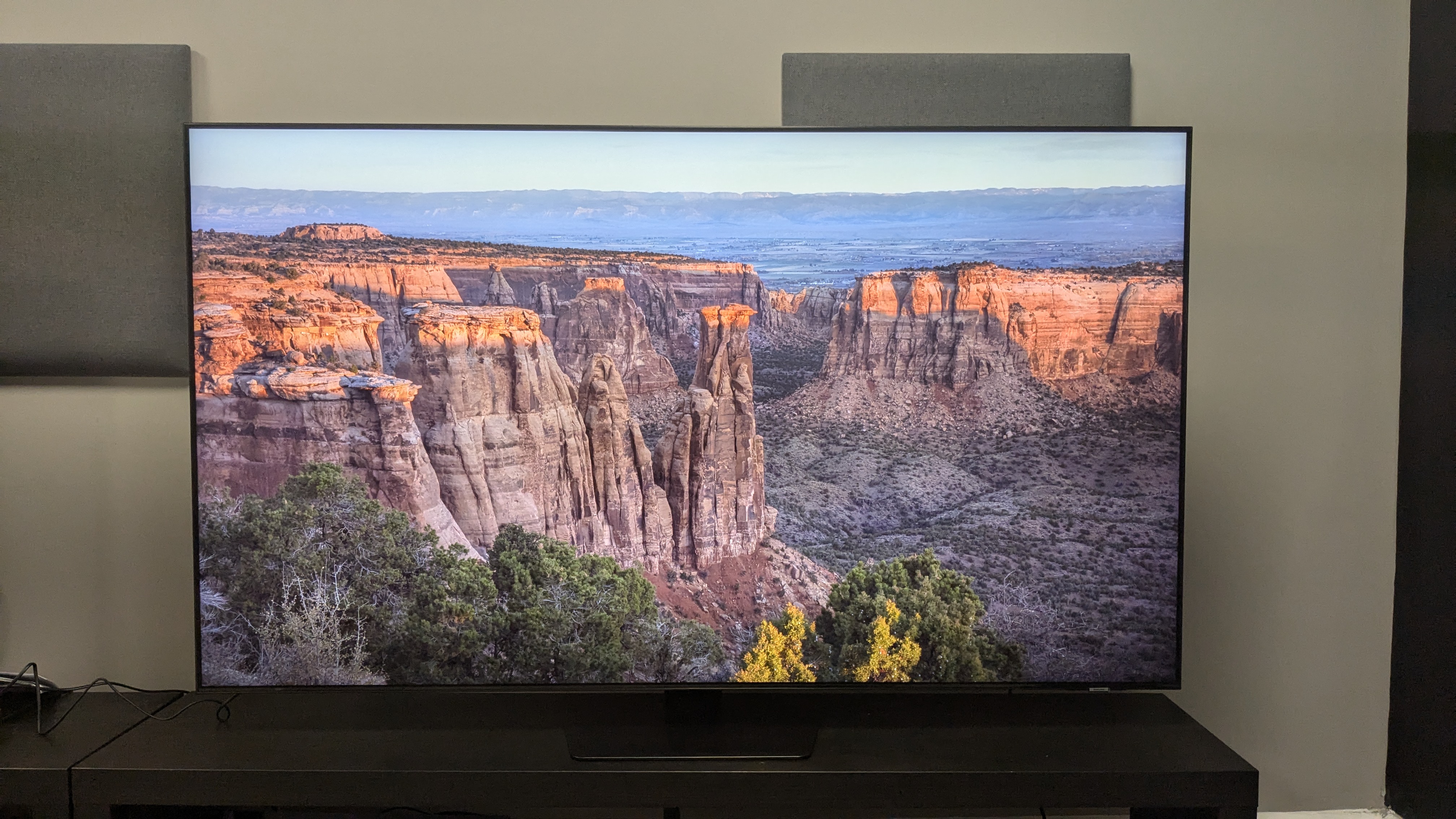
Samsung QN90D review: Picture quality
- Lifelike detail and textures
- Vibrant yet natural colors
- Excellent motion handling
The QN90D yielded results of 2,192 nits and 1,297 nits peak brightness in Filmmaker and Standard picture modes, respectively, when measured on a 10% HDR white window pattern. This doesn’t beat the likes of the Hisense U8N or TCL QM851G, which had a measured peak brightness of 2,851 and 2,859 nits, respectively, in their Movie picture mode, but it's more than substantial enough to permit viewing in bright environments.
The QN90D also yielded 659 and 680 nits in Filmmaker and Standard modes, respectively, when measured on a fullscreen HDR white window pattern, a result that easily beats most OLEDs, which typically top out at 300 nits on the same test. This makes it an ideal TV for daytime sports viewing. Another factor that benefits daytime and sports viewing is that there were minimal screen reflections even with harsh overhead lighting during my testing.
When viewing lower-resolution movies and TV shows, the QN90D displayed good 4K upscaling. Textures still could look slightly fuzzy on some content, but colors and details were improved more so than on the likes of budget mini-LED TVs such as the Hisense U7N.
Moving onto 4K HDR, I watched the throne room fight scene in Star Wars: The Last Jedi. The reds had bold HDR highlights, but also an accurate and natural look, avoiding oversaturation. Moving onto La La Land, the vivid colors of the costumes stood out against dark backdrops, with dresses during the ‘Someone in the Crowd’ scene looking vivid but authentic.
The QN90D's measured color accuracy averaged 1.65 — a great result. HDR color gamut coverage was 70.1% and 93.2% for BT.2020 and UHDA-P3, respectively, a result in line with other mini-LED TVs we’ve tested, although not as good as the Sony Bravia 9, which hit 95.8% UHDA-P3 coverage.
I next used The Batman to evaluate shadow detail, contrast and black levels. Throughout, the QN90D demonstrated deep blacks and rich contrast, accurately balancing street lights and lamps against their dim surroundings. Shadow detail was also superb, with features in clothing and faces still on full display in dark scenes, with no apparent black crush.
Viewing the same scenes from The Batman in dim/dark conditions, the QN90D still captured the gloomy tone of the movie well, demonstrating good backlight control overall in Filmmaker Mode with only minor blooming and a slight graying of black tones.

The QN90D also demonstrated great contrast and uniformity with black-and-white images. Scenes from Oppenheimer had a good balance between black and white tones, plus a wide range of gray tones in between, resulting in a dynamic-looking image. I did notice some black crush here that wasn’t apparent in The Batman, but it was only minor.
Samsung’s Real Depth Enhancer Pro feature, which was enabled throughout testing and across the reference scenes above, delivered impeccable detail and lifelike textures on the QN90D. Regardless of viewing conditions, facial features, clothing detail, and landscapes had a near 3D-like quality with a sharpness that looked natural. I’ve only seen better detail on OLED TVs such as the Samsung S95D.
Motion handling was excellent for sports. Watching streams of soccer and rugby, intense sequences and fast panning camera shots were expertly handled. Even with motion smoothing off, judder and blur were kept to a minimum. The QN90D follows in the footsteps of its predecessor, the Samsung QN90C, as one of the best TVs for sport.
Motion in movies was also well handled. In Filmmaker Mode, with all motion settings turned off by default, Top Gun: Maverick’s dynamic jet sequences looked both judder and blur-free.
I did notice slight contrast fade and backlight blooming when the QN90D was viewed from an extreme angle, but it was minimal compared to other mini-LED TVs I have tested this year.
The Samsung QN90D doesn’t quite take the prize for 2024’s most impressive mini-LED TV picture owing to the release of the Sony Bravia 9. It also faces stiff competition from the TCL QM851G (in the US), the TCL C855 (in the UK) and the Hisense U8N, but it’s an impressive TV nonetheless.
- Picture quality score: 4.5/5
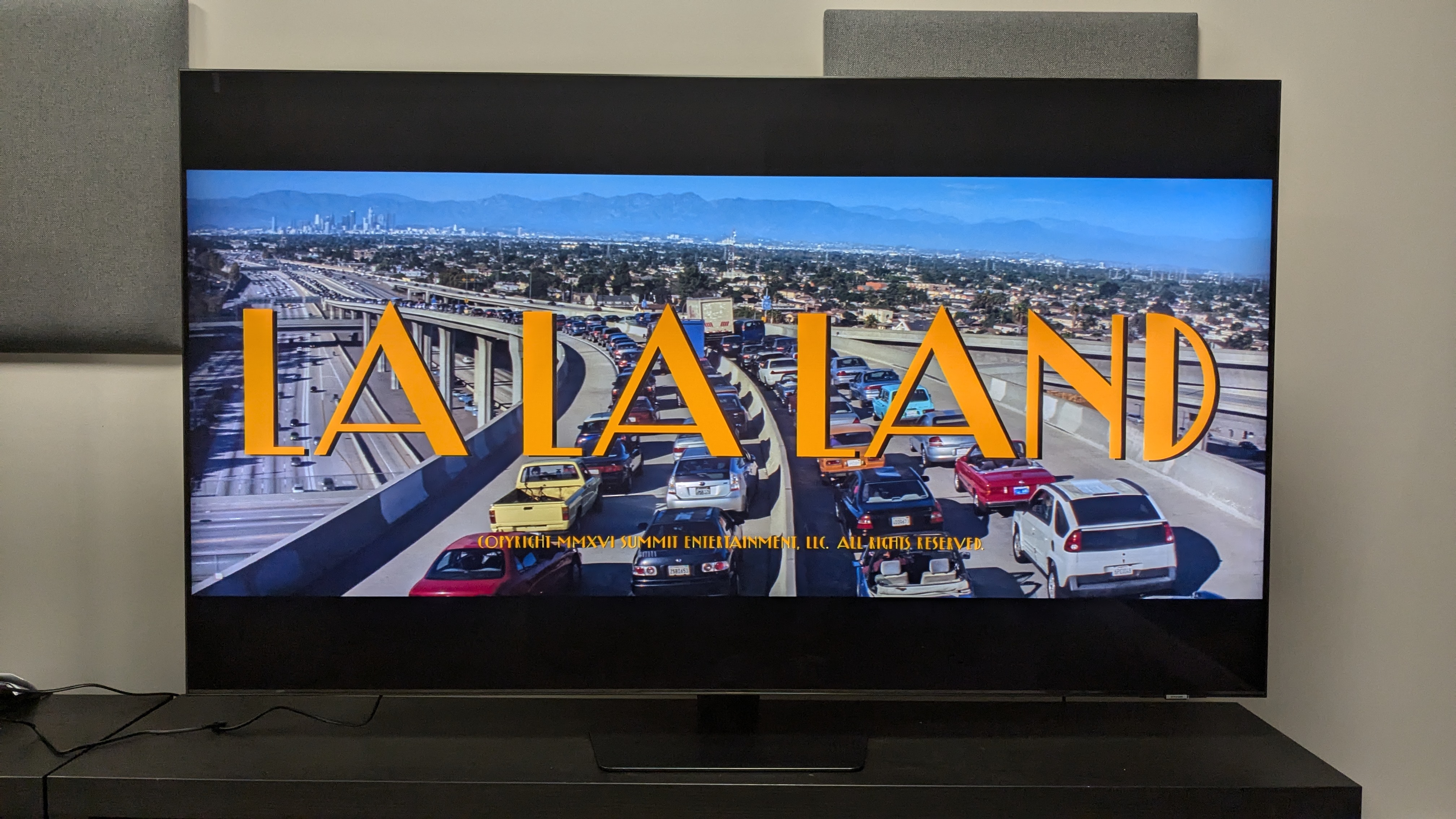
Samsung QN90D review: Sound quality
- 4.2.2-channel speaker array
- Effective Object tracking sound (OTS) feature
- Sound feels slightly contained
The QN90D has a 4.2.2-channel, 60W speaker array that supports Dolby Atmos. It also has audio-related AI features such as Adaptive Sound Pro and Active Voice Amplifier Pro, which analyze the scene you’re watching and adjust audio and speech respectively, and an AI Sound mode that balances sound effects within the scene.
Samsung’s Object Tracking Sound+ (OTS+) system on the QN90D is used to accurately place dialogue and effects on the screen. I found it to be incredibly effective, with all sound connected with the action regardless of the content. During The Batman’s chaotic Batmobile car chase, effects such as screeching tyres, rumbling engines, and crashes felt accurately placed and well-balanced with dialogue. The same held for La La Land, as the score and voices felt well-placed and balanced with sound effects such as scraping shoes.
The QN90D also demonstrated weighty but clean-sounding bass, whether it was the aforementioned Batmobile engines in The Batman or drums and bass instruments in La La Land. The dialogue was also clear throughout, even cutting through chaotic action sequences.
As good as OTS+ was, the Samsung’s soundstage felt limited – almost as if it couldn’t quite escape the screen borders. I found that Dolby Atmos soundtracks, while supported, weren't given as much room to breathe as you’d find in the best TVs for sound.
Trying out the QN90D’s AI Sound mode, OTS became more effective and effects were given more room to breathe, but at the sacrifice of the Amplify mode's punchy bass and mids. Voice amplification mode was effective, but again it wasn’t worth the sacrifice. One of the best Dolby Atmos soundbars is recommended for those looking for a complete movie experience, though it’s not wholly necessary with the QN90D.
- Sound quality score: 4/5
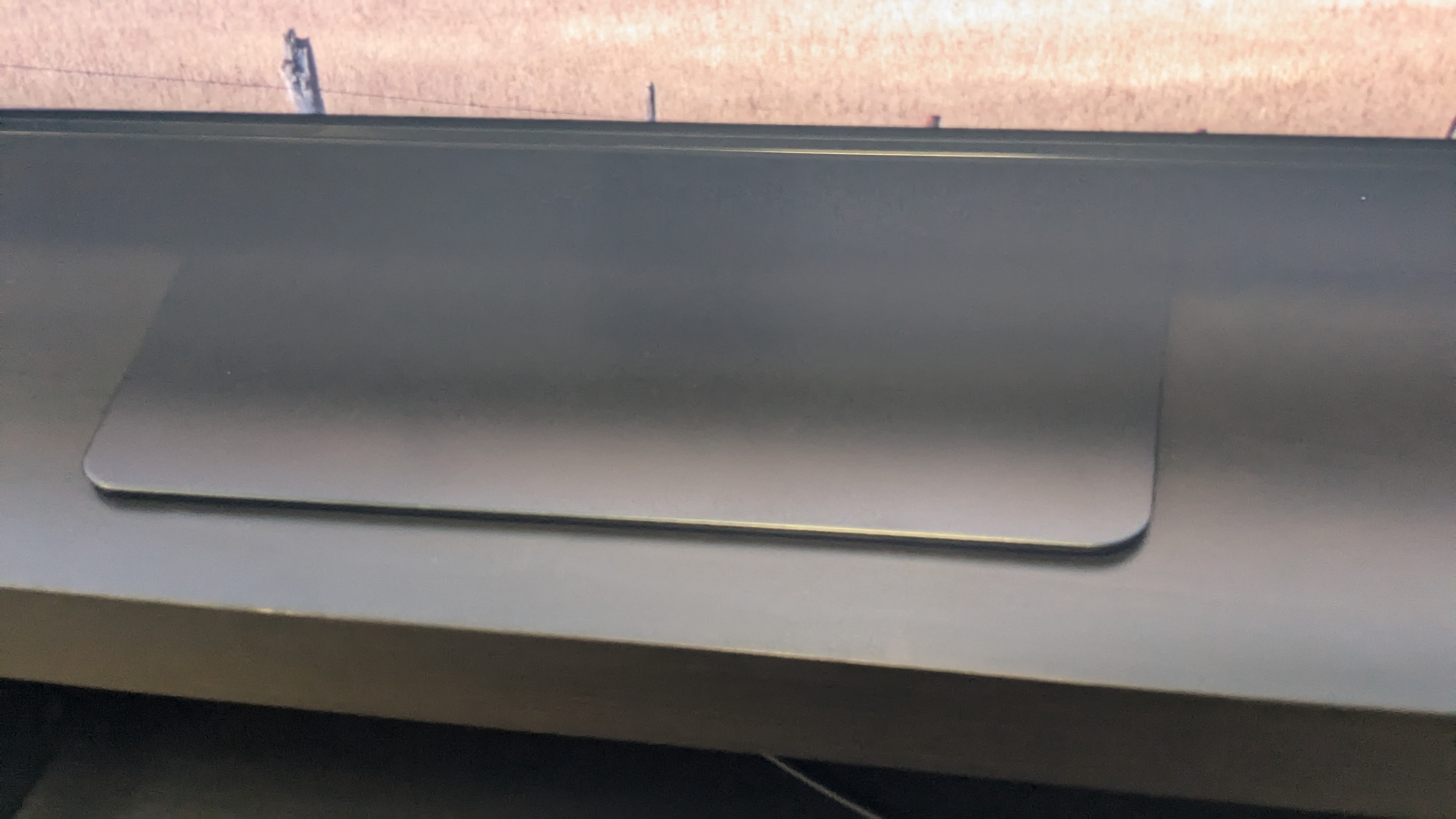
Samsung QN90D review: Design
- Modern, sleek design
- Premium, weighty stand (65-inch)
- Samsung SolarCell remote
The QN90D is undoubtedly a premium-priced TV, but it has the build quality to match. The \stand provided with the 65-inch model I tested is made of solid metal material and is reassuringly weighty. I did notice some wobble when changing cables, but the QN90D felt sturdy overall.
The physical design of the QN90D is visually appealing as well. It has a trim profile with minimal depth, measuring just over 1 inch (2.69cm), the same as the LG G4 OLED, and has a bezel-less display. Even the rear panel has been looked after, sporting a stylish, smooth, navy-hued appearance that adds to the premium quality.
Samsung’s supplied remotes (two in the model I tested in the UK) include a functional, button-heavy handset and a SolarCell remote. The compact and lightweight SolarCell has minimal buttons. It also doesn’t require batteries, with a solar panel located on the rear and USB-C charging available as well.
- Design score: 4.5/5
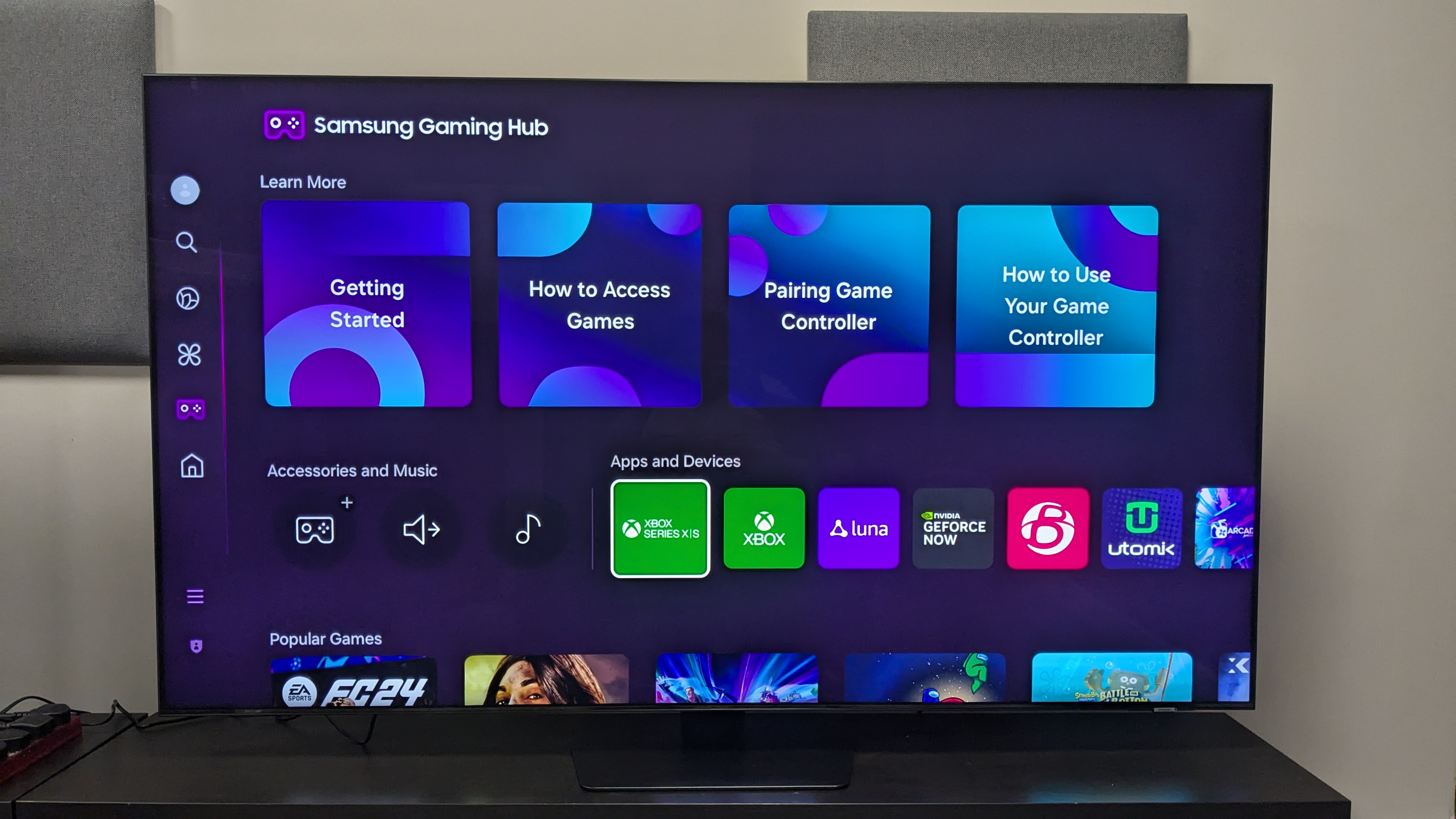
Samsung QN90D review: Smart TV & menus
- Tizen smart TV interface
- Hubs including Home, Game, Daily+ and Ambient
- Plenty of picture settings, but sound settings lacking
The QN90D uses Samsung’s Tizen smart TV platform. A main feature is several hub pages based on different categories: Home, for apps and recommendations; Game, for gaming-related content including cloud-based apps; Daily+ for health, wellness, daily admin tasks and even more work-based applications; and Ambient, which displays both static and dynamic artworks on screen.
Menu layout and navigation is relatively user-friendly, with a Quick Settings menu that appears along the bottom of the screen providing access to picture mode, sound mode and other major settings. I did find there was the occasional lag during navigation of different menus, but this was rare.
Picture settings are well-covered, with some calibration options for those who like to make more in-depth alterations. Preset picture modes include Standard, Movie, Dynamic (which is best avoided), Filmmaker Mode and more. Sound modes aren’t as well catered for, with only Standard and Amplify available with some settings to tweak.
Tizen is a dependable enough smart TV interface, but doesn’t quite beat webOS on LG TVs.
- Smart TV & menus score: 4/5
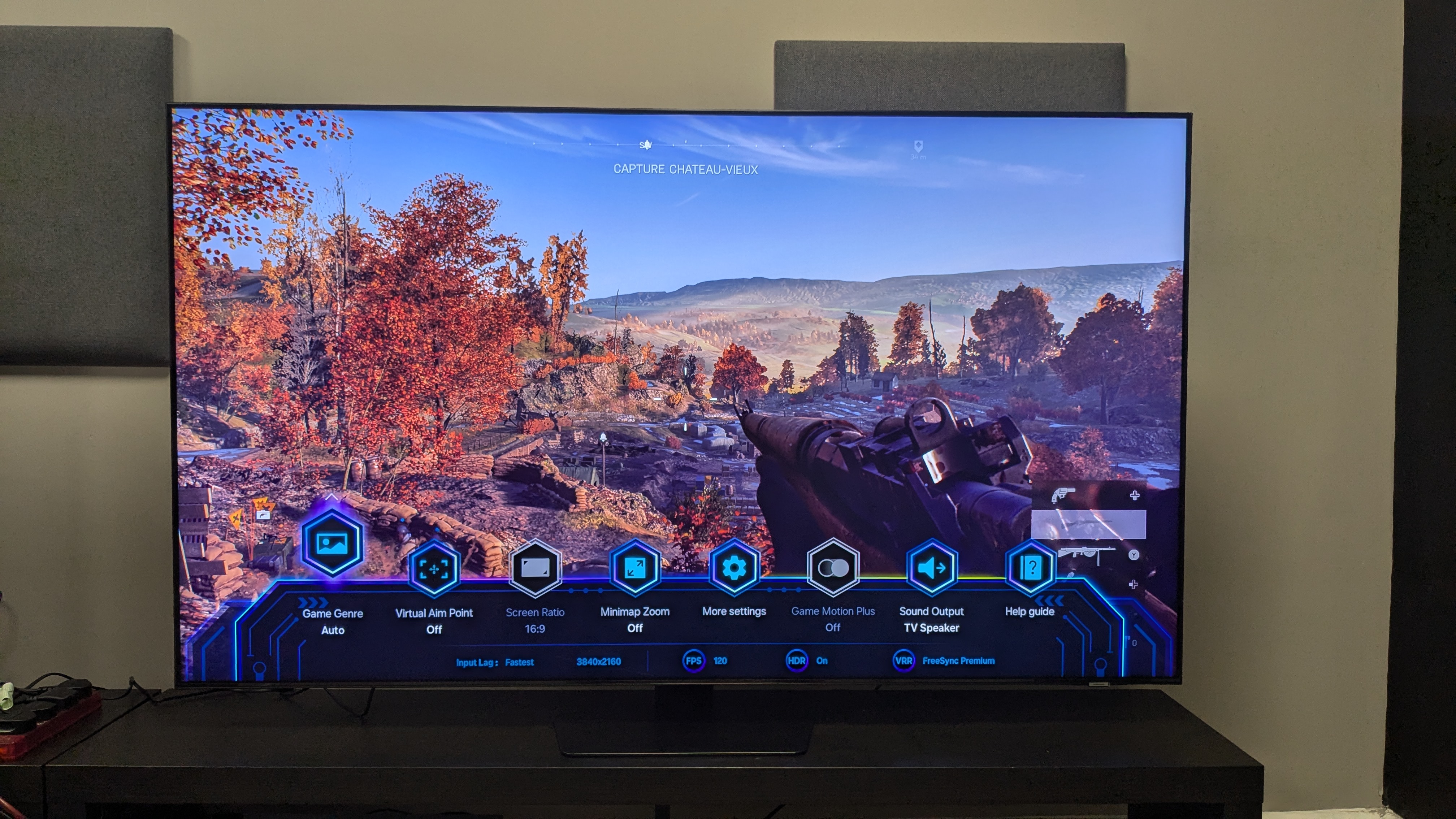
Samsung QN90D review: Gaming
- Four HDMI 2.1 ports
- Ultra-low 9.9ms input lag time
- Gaming Hub and cloud-based app support
The QN90D comes well-stocked with gaming features and connections. Carrying four HDMI 2.1 ports, it supports 4K 120Hz (up to 144Hz for PC gamers), VRR (including AMD FreeSync Premium Pro), ALLM and HGiG integration. It also comes with the Gaming hub mentioned earlier in this review, which serves as a space for everything gaming and includes support for Twitch and cloud-based apps from Xbox, Luna, Nvidia Geforce Now and more.
Gaming performance on the Samsung QN90D is top-notch. Thanks to an ultra-low 9.9ms input lag time, graphically intense gaming is smooth and judder-free. Playing an airfield attack mission in Battlefield V, switching between targets and panning the environment for enemies was a breeze, regardless of the action taking place.
In terms of graphics, the QN90D mostly carries its movie picture quality to games, with rich contrast, refined details and sharp textures. I did find the QN90D’s colors and HDR tone mapping to be aggressive at times while gaming, giving some details a ‘too-sharp’ look. Thankfully, these settings can be altered but it’s worth noting for gamers who like it to look correct out of the box.
- Gaming score: 5/5
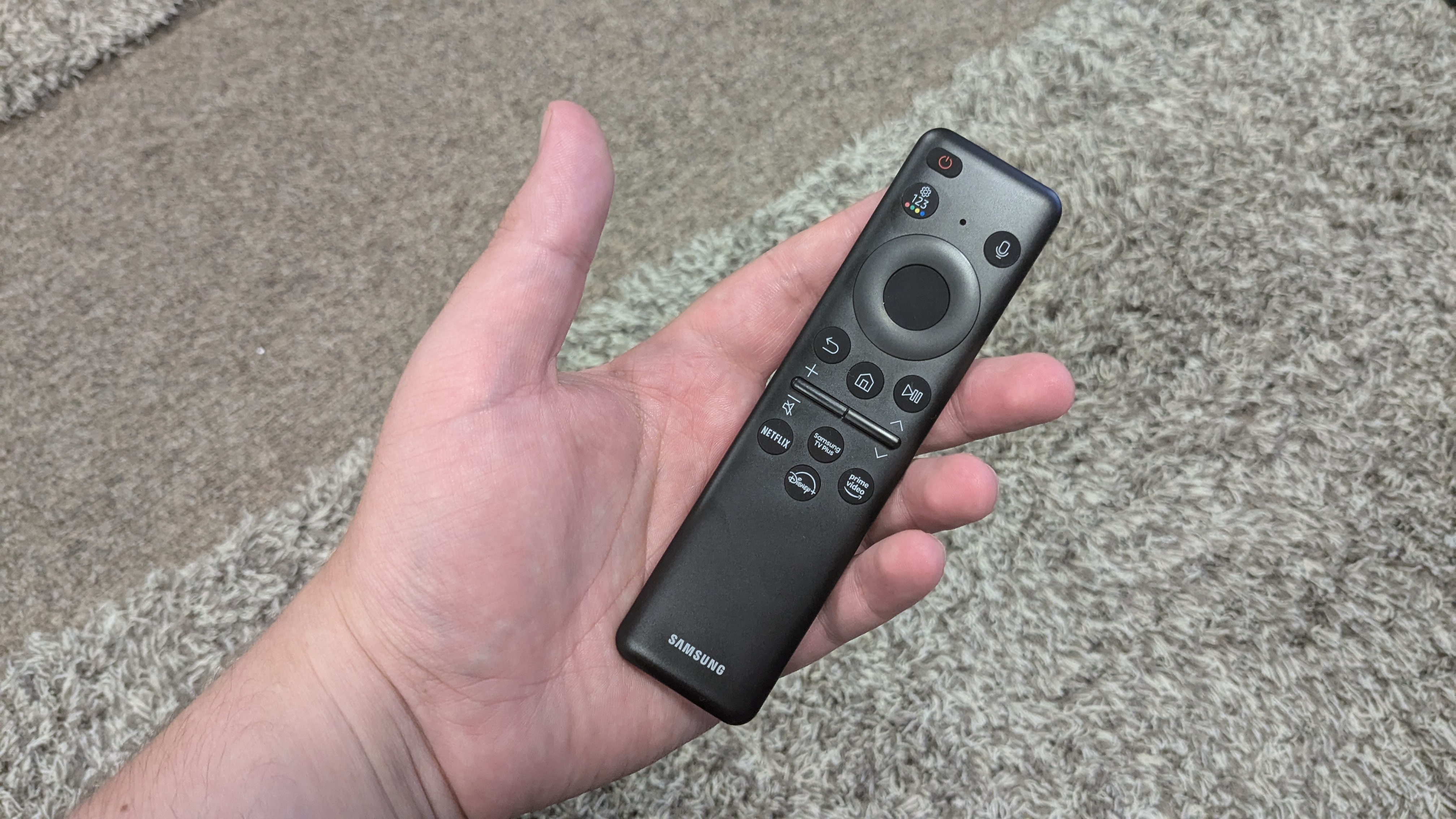
Samsung QN90D review: Value
- Very competitive mini-LED TV market
- Cheaper alternatives from Hisense and TCL
- Great for sports fans
Value is one of the QN90D’s toughest areas as it faces stiff competition from Hisense and TCL, with both providing strong-performing and mostly similarly featured mini-LED sets, sometimes for significantly less money.
The 65-inch Samsung QN90D costs, on average, $1,899 / £1,999 / AU$3,995. Compare that to the 65-inch Hisense U8N, priced at $999 / £1,699 / AU$2,295. There’s also the 65-inch TCL QM851G (available in the US) priced at $1,499 and the TCL C855 (available in the UK and Australia) priced at £1,299/AU$1,995. Clearly, the QN90D costs more than these sets, all of which are well-featured with excellent picture quality for the money.
One area where the QN90D has those other TVs beat is motion handling. The QN90D is excellent for fast-paced motion, and for avid sports fans that can justify its higher price.
- Value score: 3.5/5
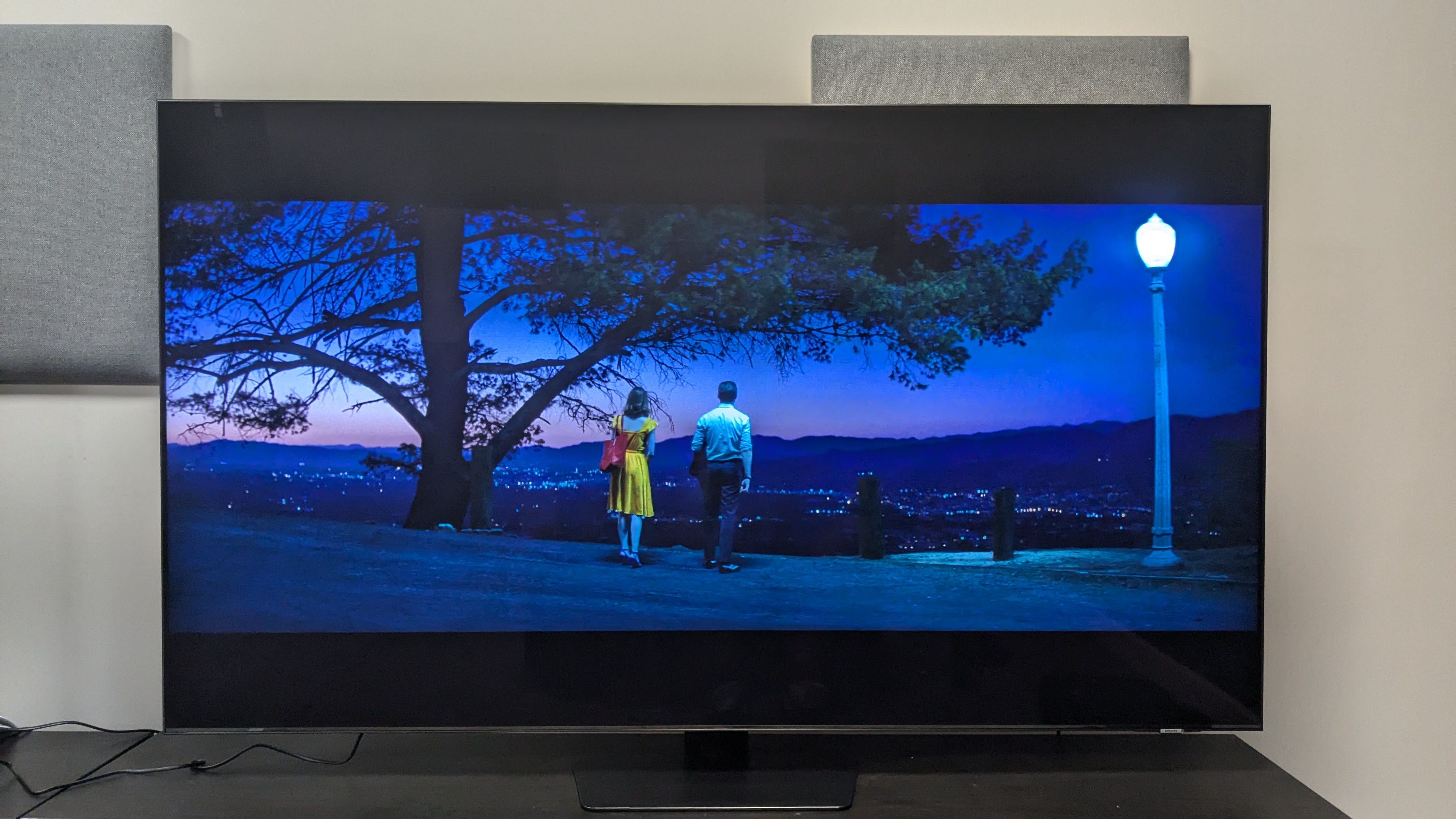
Should you buy the Samsung QN90D?
Buy it if...
Don't buy it if...
Also Consider
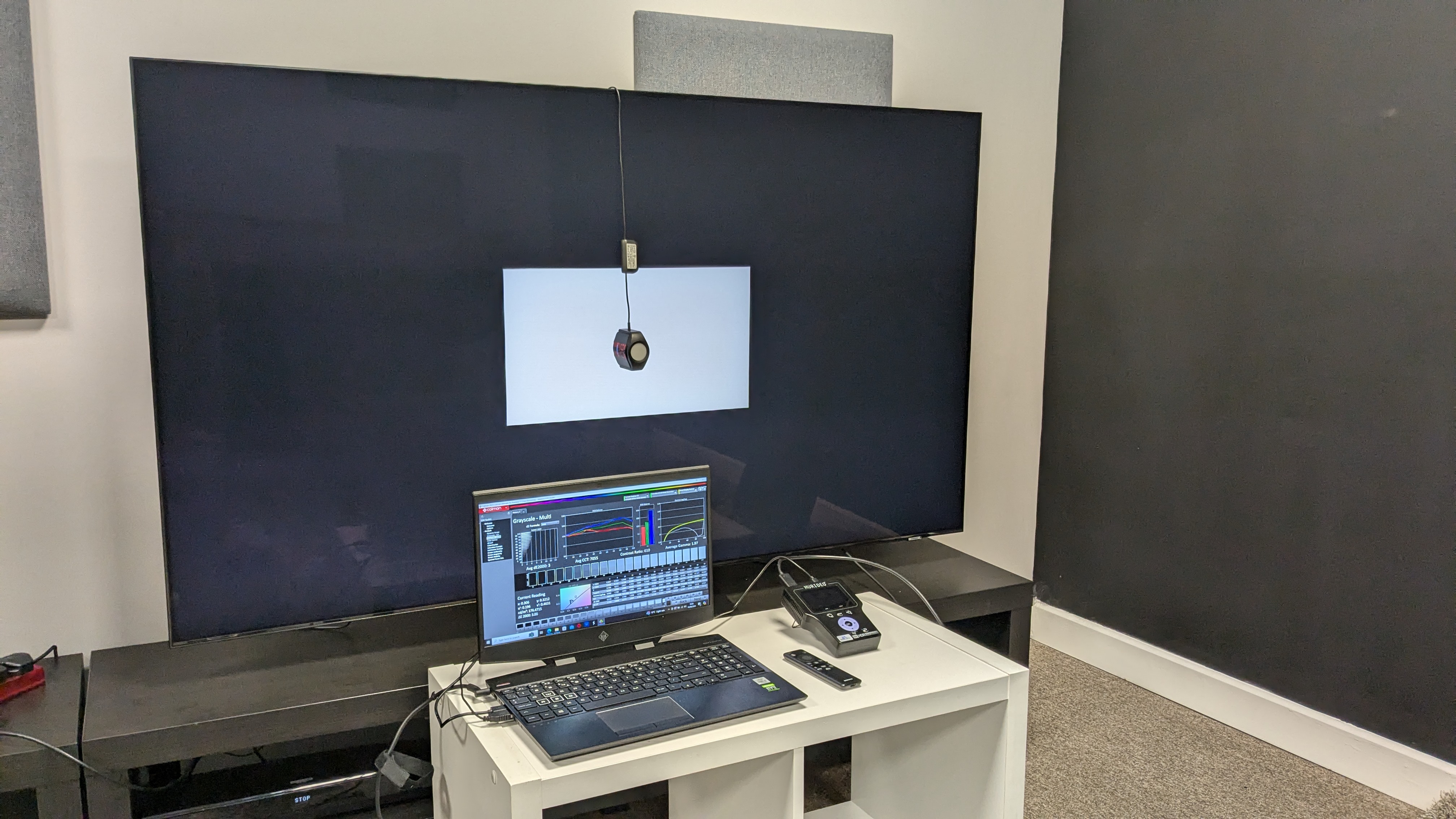
How I tested the Samsung QN90D
- Testing in lab in varying light conditions
- Picture tested with both HDR and SDR sources
- Measurements taken using Calman color calibration software
When testing the Samsung QN90D, I first used it for casual viewing to determine the most accurate picture preset modes (Movie, Filmmaker Mode and in some cases Standard) before moving on to critical viewing.
I then used a variety of SDR (broadcast TV, DVD, Blu-ray) and HDR (4K streaming and 4K Blu-ray) sources to test the QN90D's out-of-the-box picture, analyzing color, contrast, motion, black levels, detail and upscaling (for lower resolution sources), using reference scenes. For 4K Blu-ray playback, I use the Panasonic DP-UB820 4K Blu-ray player.
After critical viewing, I moved on to taking measurements for brightness (both SDR and HDR), color and grayscale accuracy and HDR color gamut coverage. To do this, I use a test pattern generator and colorimeter and record results using Portrait Displays' Calman color calibration software.
Brightness measurements were recorded for both HDR and SDR in nits using 10% and 100% white window patterns. For the color gamut, I recorded the QN90D's BT.2020 and UHDA-P3 coverage. Finally, for color and grayscale accuracy, I recorded the QN90D's resulting Delta E values (the margin for error between the test pattern source and what's displayed on the TV).
I also tested the QN90D's gaming performance using an Xbox Series X and recorded its input lag time with a Leo Bodnar 4K HDMI Input Lag Tester.
For a more detailed explanation of how we test TVs at TechRadar, check out the link.
- First reviewed: Spetember, 2024
- Read TechRadar's reviews guarantee







